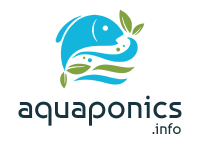Indoor hydroponics is a well-established practice worldwide, and, it can be very high tech. In the commercial world of plant production, it is employed in most cases where high levels of yield are demanded. When getting involved in hydroponics, quite a bit is highly sophisticated. This sophistication demands precision when talking about the nutrients provided to the plants. Too much and they get damaged, too little and you get the same. These nutrients are produced by chemical fertilizer companies and are fed to the plants via the water that is provided for them.
Indoor hydroponics requirements
Depending on the size of the Indoor hydroponics system, more or fewer complex systems are necessary, whether it be monitoring systems, filtration systems, water systems, air and lighting systems, etc.
The more involved the system is, the more everything is top-notch and expensive. Even people who grow food in their basement using indoor hydroponics systems need such support systems and a steady supply of chemical fertilizers. In fact, they cannot do without them.
Altogether, Indoor hydroponics systems require far more attention to numbers (water ph. and plant nutrition) and filtration to keep the roots of the plants clean so they may absorb the nutrients, than their close cousin aquaponics.
Indoor hydroponics in the inner city
The Indoor hydroponics system may be an option for people living in apartments in the inner city, but they will have to deal with the issues of locating it. Some city dwellers opt to place these hydroponics systems on window sills if they are tiny or balconies if they are larger. Either way, an Indoor hydroponics kit is a good way to learn more about the workings of this type of system.
Indoor hydroponics need lighting
Lighting for Indoor hydroponic systems with instances where daylight is severely restricted is a must. Today, LED technology (Light Emitting Diode), provides the solution adequately. They have a much longer life span than incandescent lights, and it is not uncommon for them to have a 50,000 hours lifespan.
Once more, a small system may be a good way to start exploring hydroponics without breaking the bank.

